Leak Testing: A Comprehensive Guide
Leak testing is a critical process used by inspectors to determine whether an object or system is operating within acceptable leak limits. This method helps identify potential flaws that could lead to the escape of gases or liquids, ensuring safety and functionality in various industries.
Leaks occur when there is a defect—such as a hole, crack, or imperfection—in an object, allowing its contents to escape. Leak testing uses pressure to detect these issues, making it an essential part of regular maintenance procedures. By identifying leaks early, companies can prevent costly damage, ensure compliance with safety standards, and maintain product quality.
Leak testing is commonly applied to objects designed to contain or transport liquids or gases. It plays a crucial role in maintaining the integrity of systems where even small leaks can have significant consequences.
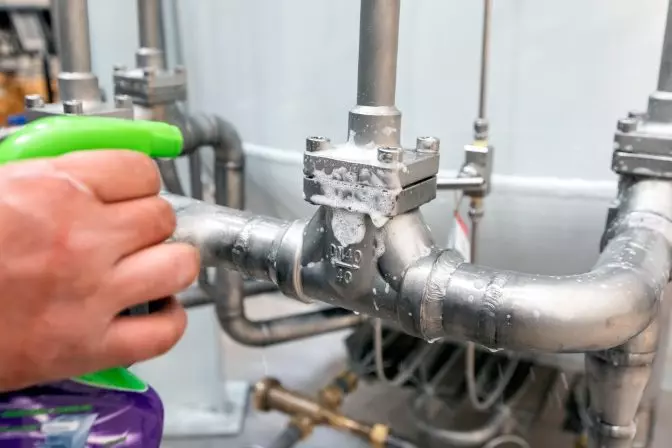
As a non-destructive testing (NDT) method, leak testing allows inspectors to evaluate the condition of an object without causing any damage. This makes it ideal for frequent inspections, especially in industries where equipment must remain functional at all times.
[Non-destructive leak testing is just one of the many NDT techniques used in modern industry. Explore more about NDT in this detailed guide.
Understanding Leak Testing
Leak testing involves applying pressure to an object to detect defects that may be causing leaks. The principle behind this method is that substances will flow from areas of high pressure to areas of low pressure. By monitoring this flow, inspectors can locate and assess the severity of leaks.
Leak tests are typically performed on closed systems to ensure that no external factors interfere with the results. The success of a test depends on the material properties of the object being tested, as different materials respond differently to pressure changes.

Common defects that leak testing aims to identify include cracks, holes, weak seals, and other imperfections that could allow fluids or gases to escape. These issues can compromise the performance and safety of a system, making early detection crucial.
Industries such as automotive, consumer goods, medical devices, packaging, and sealed electronics frequently use leak testing to ensure product reliability and compliance with safety regulations.
Advancements in Leak Testing
Recent technological advancements have significantly improved the accuracy and efficiency of leak testing. Innovations in sensors, valves, and data processing have made it possible to detect even the smallest leaks with greater precision.
The integration of the Internet of Things (IoT) has further revolutionized the field, enabling remote data collection and real-time monitoring. This allows inspectors and engineers to access critical information quickly, improving decision-making and maintenance planning.
These improvements not only enhance the effectiveness of leak testing but also contribute to better manufacturing processes and higher-quality outputs across industries.
Common Leak Testing Methods
There are several methods used in leak testing, each suited for different applications and environments:
- Burst Test: Applies increasing pressure until the object fails, useful for determining structural limits.
- Chamber Test: Used for sealed systems without direct access for pressure introduction.
- Pressure Crack Test: Detects "weeping" in valves using downstream sensors.
- Pressure/Vacuum Test: Measures pressure differences between the object and a reference volume.
- Pressure Decay Test: Monitors pressure changes under positive pressure to identify leaks.
- Vacuum Decay Test: Similar to pressure decay, but under negative pressure.
- Occlusion Test: Identifies obstructions in gas flow paths that may indicate leaks.
Most leak tests operate at low pressures, typically around 15 psi or 25% of the design pressure, whichever is lower. This ensures safety while still providing reliable results.
Key Considerations in Leak Testing
While leak testing is a powerful tool, it comes with specific considerations that must be addressed to ensure accurate and meaningful results.
Acceptable Leak Rate
Different industries define acceptable leak rates based on the function and safety requirements of the object. Not all leaks require immediate action—some may need only monitoring or no intervention at all.
Manufacturing Intent
Before conducting a leak test, it’s important to understand the original purpose of the object. Some components are designed to allow controlled leakage, while others must be completely sealed.
Material Properties
The material composition of an object affects how it responds to pressure. Brittle or overly flexible materials may change shape or deform during testing, which should be accounted for in the procedure.
Medium Characteristics
The substance being contained also plays a role in the testing process. Different gases and liquids have varying molecular sizes and pressure responses, influencing the sensitivity and accuracy of the test.
Leak Testing Equipment
Various tools and devices are used to perform leak tests, depending on the method and application. Here are some common types of equipment:
Air Leak Inspection Devices
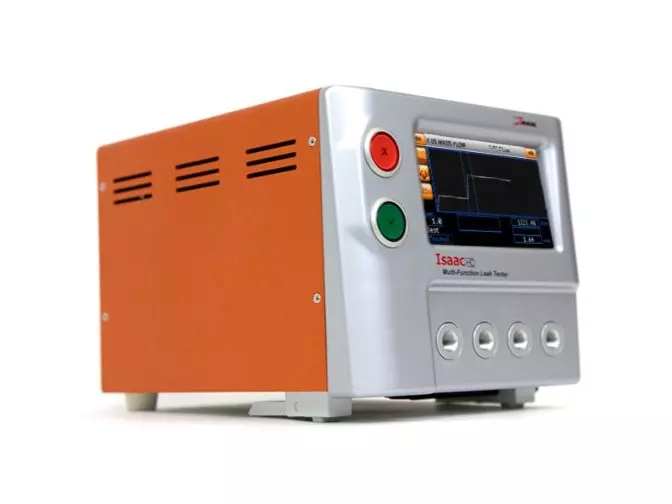 Photo credit: Zaxis
Photo credit: Zaxis
Air leak testing devices provide real-time data to inspectors, supporting multiple testing methods including vacuum decay, pressure decay, and chamber tests.
Compact Pressure Decay Leak Tester
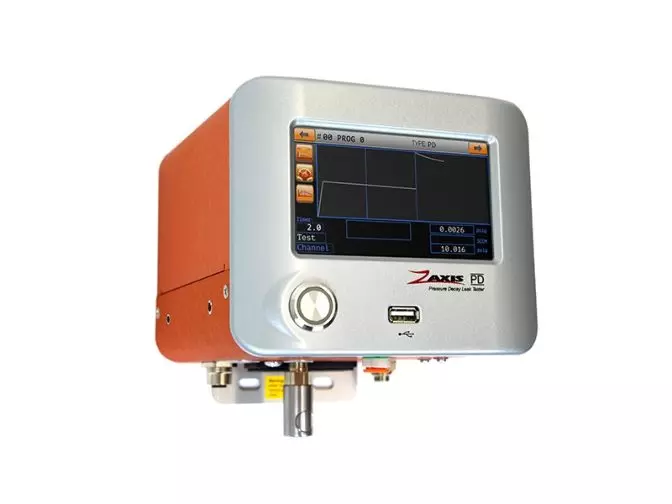 Photo credit: Zaxis
Photo credit: Zaxis
This compact device reduces connection volume, increasing test speed and sensitivity, making it ideal for on-site testing.
Large Display Leak Tester
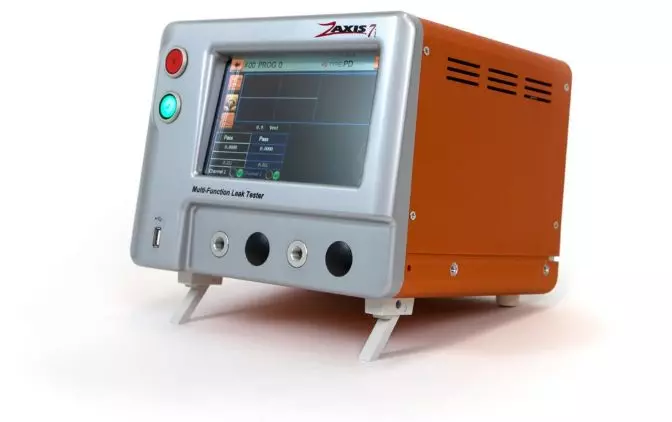 Photo credit: Zaxis
Photo credit: Zaxis
Larger displays offer enhanced visibility and faster testing capabilities, making them suitable for complex or large-scale operations.
Leak Standard
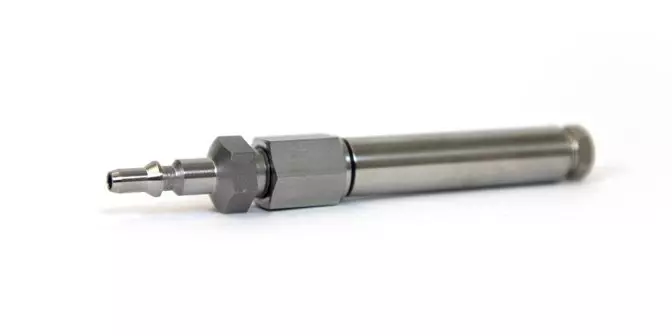
Photo credit: Zaxis
Leak standards help calibrate testing equipment and establish baseline parameters for accurate and consistent results.
Leak Testing Standards and Codes
Leak testing is often governed by industry-specific standards and codes to ensure consistency and reliability. These guidelines help maintain safety and quality across different sectors.
Some of the most widely recognized standards include:
ASME (American Society of Mechanical Engineers)
- ASME B31.3: Pressure Testing and Leak Testing Requirements for Process Piping
ASTM (American Society for Testing and Materials)
- ASTM E432-91(2017)e1: Standard Guide for Selection of a Leak Testing Method
- ASTM E493 / E493M - 11(2017): Standard Practice for Leaks Using the Mass Spectrometer Leak Detector in the Inside-Out Testing Mode
- ASTM E499 / E499M - 11(2017): Standard Practice for Leaks Using the Mass Spectrometer Leak Detector in the Detector Probe Mode
- ASTM E1003 - 13(2018): Standard Practice for Hydrostatic Leak Testing
- ASTM A1047 / A1047M - 05(2019): Standard Test Method for Pneumatic Leak Testing of Tubing
- ASTM E1603/E1603M-11(2017) Standard Practice for Leakage Measurement Using the Mass Spectrometer Leak Detector or Residual Gas Analyzer in the Hood Mode
- ASTM F2164 - 21: Standard Practice for Field Leak Testing of Polyethylene (PE) and Crosslinked Polyethylene (PEX) Pressure Piping Systems Using Hydrostatic Pressure
- ASTM F2786 - 16(2021): Standard Practice for Field Leak Testing of Polyethylene (PE) Pressure Piping Systems Using Gaseous Testing Media Under Pressure (Pneumatic Leak Testing)
- ASTM E2930 - 13(2021): Standard Practice for Pressure Decay Leak Test Method
- ASTM WK76995: New Practice for Field Leak Testing of Polyamide-12 (PA12) Pressure Piping Systems Using Gaseous Testing Media Under Pressure (Pneumatic Leak Testing)
ISO (International Organization for Standardization)
- ISO 20484:2017(en): Non-destructive testing — Leak testing — Vocabulary
- ISO 20485:2017(en): Non-destructive testing — Leak testing — Tracer gas method
- ISO 20486:2017(en): Non-destructive testing — Leak testing — Calibration of reference leaks for gases
- ISO 27895:2009(en): Vacuum technology — Valves — Leak test
API /A53/A106 Seamless Steel Pipe
A106 Seamless Steel Pipe,A53 Seamless Steel Pipe,Api Seamless Steel Pipe
Hydrogrand Steel Pipe Co.,ltd , https://www.hydrograndtube.com